Senior group. Senior preschool age. Children 5-6 years old
Summary of a group speech therapy lesson in a compensatory group (older age) “Sound [zh]” Goal: automation of the sound [zh] in syllables , words, phrases, oral speech. Objectives: Correctional and educational: 1. To consolidate the correct pronunciation of the sound [zh] in syllables , words, phrases, oral speech. 2. Learn to form nouns with diminutives...
Summary of educational activities in the senior group for children with speech disorders “Sound [l']” Purpose: introduction and consolidation of the sound [l'] . Objectives: Educational: 1. Introduce the sound [l'] . 2. Compare the articulation and pronunciation of the sounds [l] and [l'] . 3. Strengthen the skill of analysis and synthesis of the reverse syllable . 4.Teach to highlight the sound [l'] at the beginning and end of a word. 5….
Where to start learning to read and write?
L.S. Silchenkova believes that it is necessary to begin learning to read and write during the period of development when mental functions begin to mature. The learning process will be effective only if the characteristics of the child associated with his age are taken into account, as well as his individual capabilities, which are determined by speech, perception, thinking and memory
It is necessary to devote enough time to form the child’s speech hearing. It is also necessary to develop the child’s ability to remember letter styles.
The human brain, according to N.G. Altukhova, contains cells that perform the function of remembering the outline of a letter without making any effort. These same cells allow you to use those letters that a person has already memorized.
The process of developing modern methods of teaching schoolchildren to read and write has a rich history.
K.D. Ushinsky proposed the so-called sound method of studying literacy. It had certain advantages and disadvantages. Much attention was paid to introducing schoolchildren to the sound aspects of speech, as well as to developing sound analysis.
According to P.S. Zhedek, there is a more advanced method of teaching literacy. According to his approach, it is necessary to divide words into individual syllables. And each syllable can also be divided into separate sounds.
In this case, sounds that stand out must be indicated using a printed letter. And after that you need to read the written word. But this approach does not reveal the mechanism of the reading process, the moment when individual sounds merge into syllables.
Another technique was developed by V.A. Kiryushkina and other researchers. They based their approach on speech sound analysis. What is new in this system is the different order in which letters and sounds are learned. Letters and sounds are learned in an order based on the frequency of their use in the native language. The most frequently occurring sounds and letters are studied first, and then in descending order.
A.A. Nazarenko also offers an interesting approach that deserves special attention on our part.
Schoolchildren need to be taught methods of mental action: children analyze sounds, engage in positional reading, relying on the entire alphabet. In this case, it is necessary to follow strict stages of development of reading methods.
The important thing about this technique is that during training, students begin to master first quantitative and then qualitative sound analysis of words.
After analyzing the program, we realized that the main attention in it should be paid to the sound structure of the word, developing the ability to conduct sound analysis, and subsequently teach children to read and write at school.
Literacy Techniques
During the lesson, the teacher should strive to use different techniques so that the children change types of activities. It is necessary to diversify the form of presenting new information. Let's discuss a few techniques:
- Lull rings: this is an interesting tool that allows you to shape the intellectual abilities of schoolchildren and their creative impulses. There are many different materials that this device can be used for.
- to teach schoolchildren to read and write, you can also make Lull rings, and place letters on one of them, and on the second - objects whose names begin with these letters. Children must correctly connect the letters and the corresponding images.
This interesting technique helps to captivate children, create an atmosphere of ease, and help them perceive new material.
By studying letters with children, you can help them better assimilate new material. To do this, you need to play with these letters in different creative tasks. For example, you can draw a letter and decorate it with different patterns.
You can also fashion letters, sew dresses for them, lay out letters from peas or buttons. They can be drawn on the sand, made from sticks and other materials available to children.
It is also necessary to test children's knowledge using test materials.
The exercises that are included in this work are material with images of objects for studying vowels. Schoolchildren connect a letter and an object that contains this letter in its name. You can also draw diagrams for words, showing the number of syllables and stressed syllables.
Formation of readiness for literacy training in children of senior preschool age
Senior preschool age is the age for serious preparation of children for learning to read and write. The problem of a child’s readiness to master literacy is one of the most pressing when organizing work with children of preschool and primary school age.
For a fairly large number of pupils of preschool educational institutions, upon entering school, difficulties appear already during the period of learning to read and write. Therefore, even before entering school, it is necessary to pay quite a lot of attention to shaping the readiness of children to successfully master literacy and master the initial skills of reading and writing.
Literacy is the ability to read and write (M.R. Lvov). Mastering literacy is the first condition for further education at school [1].
The concept of readiness for learning to read and write among older preschoolers includes the formation and development of such necessary components as: gross and fine motor skills, coordination of movements, spatio-temporal concepts, sense of rhythm, visual-spatial concepts, formation of the phonemic system [2].
In our practice, we actively work to develop readiness for learning to read and write in children of senior preschool age, which includes the following areas:
Direction 1 – formation of the verbal component of readiness for learning to read and write in older preschoolers.
Direction 2 – formation of the nonverbal component of readiness for learning to read and write in older preschoolers.
Tables 1 and 2 present the content of the work on the formation of the verbal and non-verbal components of readiness for teaching literacy to older preschoolers, which we implement in the conditions of a preschool educational organization.
Table 1
Formation of the verbal component of readiness for learning to read and write in older preschoolers
| Directions | The content of the work |
| Formation of phonemic awareness | “Recognition of non-speech sounds” “Discrimination of words that are similar in sound composition” “Reproduction and differentiation of syllables” “Differentiation of phonemes, clarification of sound articulation based on perception and sensations” |
| Formation of sound culture of speech | "Fishing". “Happy Harvest” “Let’s decorate the Christmas tree” by decorating it with toys (for example, with the sound C). Who will help Pinocchio climb the mountain faster “Rooster and Cockerels” “Sound houses” Repeat the tongue twister with your child Pure twisters |
| Formation of vocabulary | Development of associations. Classification of objects by pictures. “Find the extra object.” “Extra” word among the verbs: “Pair to pair” (choose words by analogy). Tram, driver, trolleybus. “Name the parts.” |
| Formation of grammatical structure of speech | “One-many” “Name it affectionately” “Which, which, which” Game “Whose tail?” |
| Formation of coherent speech | — Making sentences based on two subject pictures; -Restoration of various kinds of deformed sentences; - Making proposals based on “living pictures” (based on subject pictures cut out along the contour) with demonstration of actions on a flannelgraph. -Write a story describing your favorite toy or the toy you want to receive on your birthday. — Retell a short text. |
table 2
Formation of the nonverbal component of readiness for learning to read and write in older preschoolers
| Directions | The content of the work |
| Formation of the motor sphere | Praxis of posture – hands Dynamic praxis Constructive praxis Oral praxis: |
| Formation of visual perception | “Cut pictures” “Outlines” “Complete the drawing” “Bitmap” |
| Formation of acoustic gnosis | “Who will hear what” “Help the toys” “Rain” “Who is telling” |
| Formation of auditory-verbal memory | "Shop" "A couple of words." “Recover the missing word.” "Fish, bird, beast." “Repeat and continue.” |
| Formation of visual-object memory | “Name objects by their contours.” Draw them from memory in the frames on the right, color them. “Find familiar geometric shapes.” “Puzzle games” “Remember the pictures” “Which letters have changed their place.” |
| Formation of attention processes | "A bird is not a bird." “Illegal movement” “Please” “Top clap” Exercise “Don’t make a mistake” |
Let's give examples of some games.
"Recognition of non-speech sounds." 4-5 objects are placed in front of the child (a metal box, a glass jar, a plastic cup, a wooden box), when tapped on, you can hear different sounds. Using a pencil, the speech therapist calls out the sound of each object and plays it repeatedly until the student grasps the nature of the sound.
"Fishing". There are fish in the aquarium with letters attached to them and using a fishing rod with a magnet we pull the fish out to a given sound. Having caught “fish” - words, children learn not only to pronounce sounds correctly, but also to divide words into syllables, determine the position of this sound in a word, learn to ask questions “Who is this? What is this?”, form the plural and much more can be done with these “fish”.
“Find the extra object.” Children are offered several pictures, among which one picture depicts an object that does not belong to the same thematic group as the other objects depicted in the pictures. Children must show the “extra” picture and explain why it is extra.
“Name objects by their contours.” Task: look at and remember the pictures. Draw them from memory in the frames on the right, color them.
Exercise “Make no mistake”: an adult pronounces some words, a child should, for example, clap his hands if he hears the name of a vehicle (clothing, tool, etc.), if he hears a word with a certain sound, etc.
Thus, the formation of readiness for learning to read and write in children of senior preschool age includes two directions: the formation of a verbal component of readiness for learning to read and write in older preschoolers, the formation of a non-verbal component of readiness to learn to read and write in older preschoolers. An important aspect is the methodologically correct selection of game exercises and tasks to develop readiness for children to learn to read and write, taking into account the highlighted areas, as well as the characteristics of children of senior preschool age.
Bibliography
- Lvov M.R. Fundamentals of speech theory. Tutorial. – M.: VLADOS, 2000. – 154 p.
- Trigger R.D. Preparing for literacy. – Smolensk, 2000. – 80 p.
Literacy teaching methods
Today there are many different programs, the content of which has significant differences. Therefore, the requirements for preparing children depend on whether children are taught the basics of literacy and at what age this is supposed to be done.
At the same time, there are many facts that allow us to highlight certain directions in teaching literacy to children of primary school age. There are known patterns that work in the field of teaching reading and writing.
There are various proven teaching methods. Positive results were obtained from the use of these methods, which significantly influenced the intellectual and speech development of schoolchildren. And these are the areas of work:
- you need to introduce the child to the word: he must learn to isolate words as an independent unit of speech;
- introduce children to sentences: children should also be able to isolate sentences as speech units;
- introduce the verbal composition of a sentence: children must learn to divide sentences into words and compose sentences from two to four words;
- introduce children to the syllabic structure of words: children can divide small words into syllables and make words from different syllables;
- To introduce children to the sound structure of a word, it is necessary to develop their ability to analyze the sound composition of a word, determine the number of sounds, their sequence, compose words with given sounds, and understand the meaning of the phoneme.
The main role is played by the development of children’s ability to analyze the sound composition of words. And as we already wrote about this above, the processes of writing and reading are processes of translating oral speech into graphic images and vice versa.
Speech environment as a means of teaching literacy
Speech space is a very broad concept that consists of many components. This can include different speech samples that are accessible to children. At the same time, not only people can talk around, but radio and television can also sound.
L.P. Fedorenko believes that the speech environment can play a developing function. He believes that this makes it possible to intensify verbal communications. And this environment makes it possible to reveal the student’s full speech potential. But such an environment cannot arise spontaneously. It comes about as a result of deliberate effort.
The author believes that there are two components of the speech environment: this is the natural environment of communication, as well as communication with other children. The second component is an artificially created speech environment.
A free environment is a child’s communication with peers and adults. It occurs naturally during different regime moments. But it can be used to achieve maximum effect.
The artificial environment is a speech space that is purposefully organized by the teacher to achieve the assigned tasks. To do this you need to use certain techniques.
You could even develop a communications center. It will consist of the following elements:
- theaters;
- various visual aids;
- bookshelves.
The aids used may be:
- didactic board games;
- albums on sound pronunciation;
- illustrated materials;
- paintings.
At the same time, all materials used must be selected so that they coincide with the age characteristics of schoolchildren.
N.K. Usova also studied this topic in detail. She wrote that kindergarten staff should organize a speech environment that would help children actively develop their speech literacy.
The speech environment should be created so that schoolchildren have the best conditions for the development of speech literacy. At the same time, children’s speech should develop not only during classes, but also during independent pastime.
Related posts:
- What is folklore and how to use its forms? Small forms of folklore are successfully used in various types of activities for…
- Logorhythmic classes and correctional means By various means, speech therapy classes contribute to the effective correction of speech in children...
- Means for the prevention of dysgraphia in preschoolers with general speech underdevelopment Prevention of dysgraphia in preschoolers with OSD - means of prevention, games,…
- What is "War and Peace" about? Summary of the novel “War and Peace” by chapters. All answers...
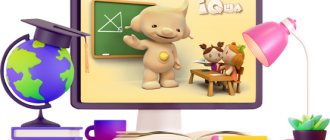
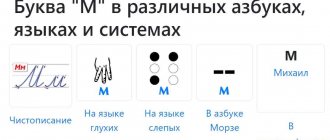
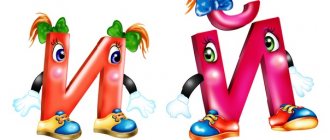
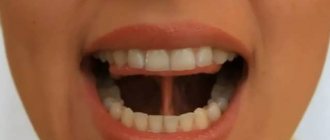
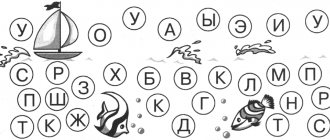
![Summary of a lesson on speech development for children 4–5 years old “Sound culture of speech: letter [p]”](https://mybabby.ru/wp-content/uploads/konspekt-zanyatiya-po-razvitiyu-rechi-dlya-detej-4-5-let-330x140.jpg)